Once a grand and thriving spa resort catering to the rich, the town of Tskaltubo was largely abandoned following the collapse of the Soviet Union in 1991. The spa resort was etablished in the 1870s due to its natural mineral springs with temperatures of 33-35°C, which were believed to have healing powers and were even called the ‘Waters of Immortality’. During the Soviet occupation of Georgia, Tskaltubo became the most popular of Georgia’s spa towns. Even Joseph Stalin paid Tskaltubo a visit after he was urged by his doctor to go there to help with his leg pain!
The 1920s saw a boom in the construction of sanatoriums in the town, and by the 1950s, Tskaltubo was full of grand sanatoriums and hotels. At its peak, up to 125,000 people visited Tskaltubo every year, and there were even daily direct trains between Tskaltubo and Moscow!


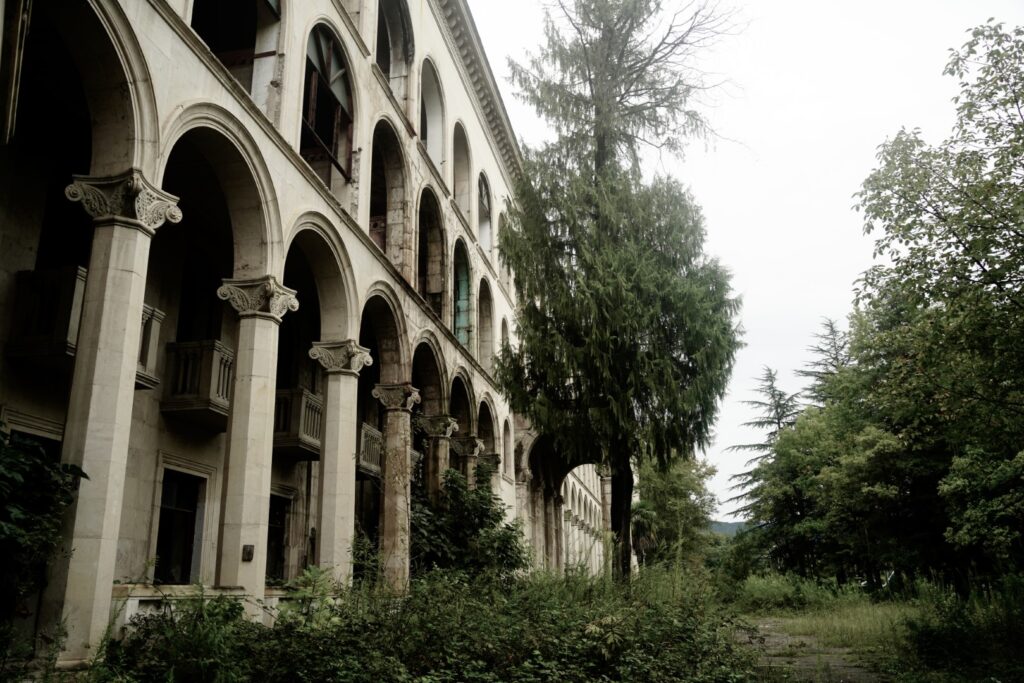

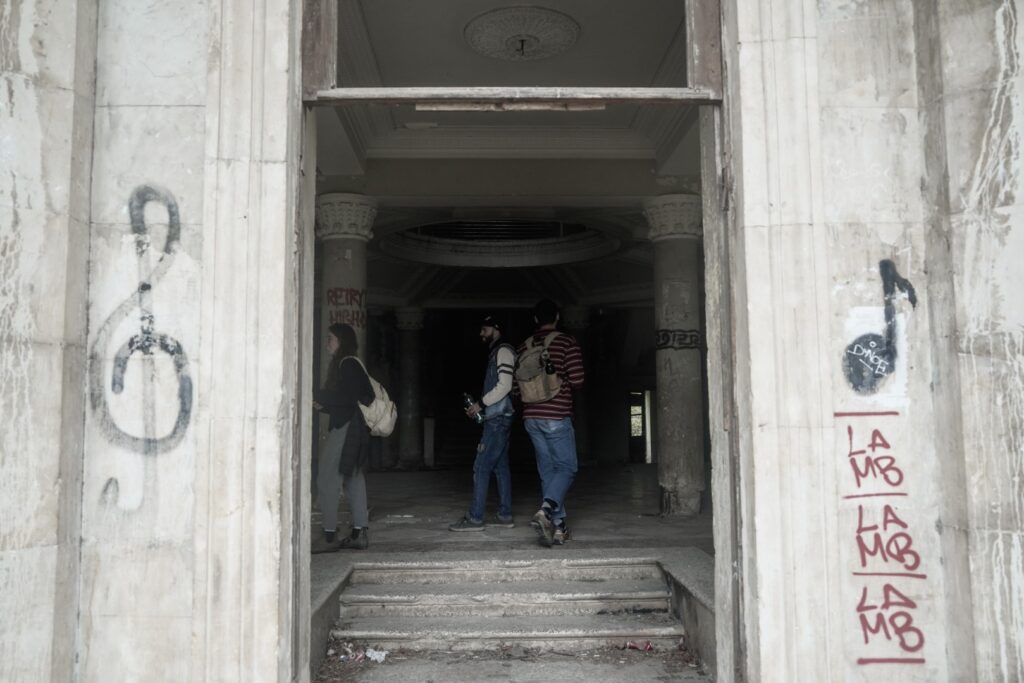

Following the collapse of the Soviet Union and Georgia’s declaration of independence in 1991, Tskaltubo’s spa industry suffered greatly, and most of the prestigious buildings were abandoned and left to decay. Over the years, the furniture, tiles and other valuable items within the buildings were re-used or sold. Today, the hollow structures of the once-grand buildings are mere reminders of a bygone era. In the past, there has been some efforts to revitalize Tskaltubo, and a recent project even had plans to turn Tskaltubo into the ‘spa capital of Eastern Europe’. However, nothing seemed to come of it, and the abandoned buildings continue to decay.
However, it’s a common misconception that the entire town is abandoned. Tskaltubo is still very much lived in, and the refurbished Tskaltubo Spa Resort continues to operate, as do a few new hotels and restaurants. Over the years, the abandoned sanatoriums have been used to house thousands of refugees from the troubled region of Abkhazia following the 1992-1993 war, and up to 6,000 people are still living in these dilapidated buildings while waiting for the permanent housing that they were once promised. Additionally, hundreds of street dogs seem to have settled in the area, and they’re not shy to follow tourists around!

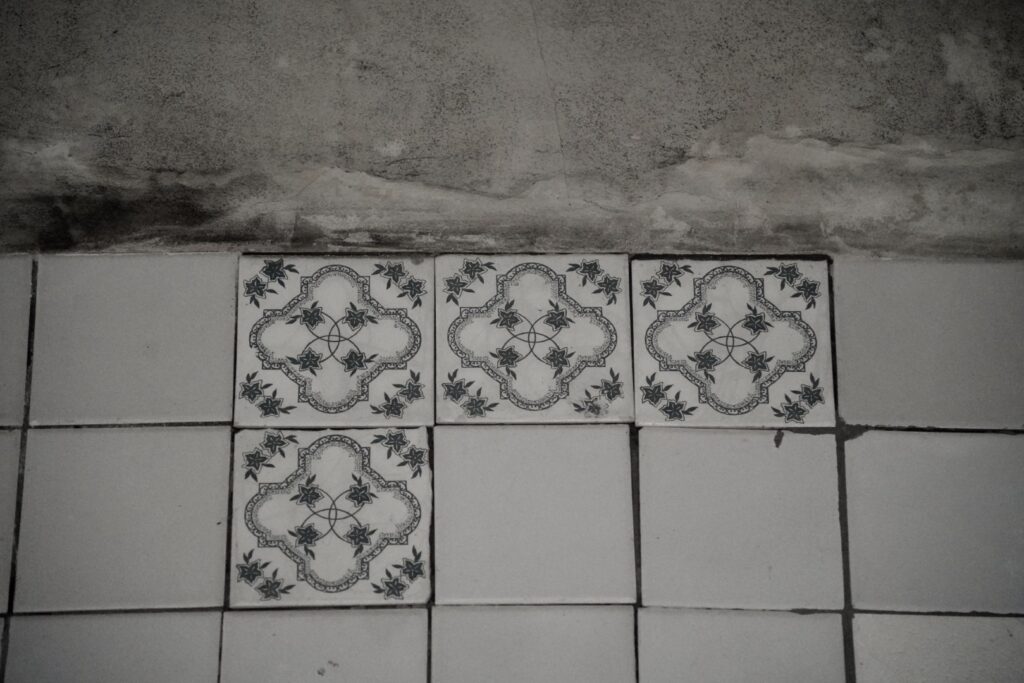
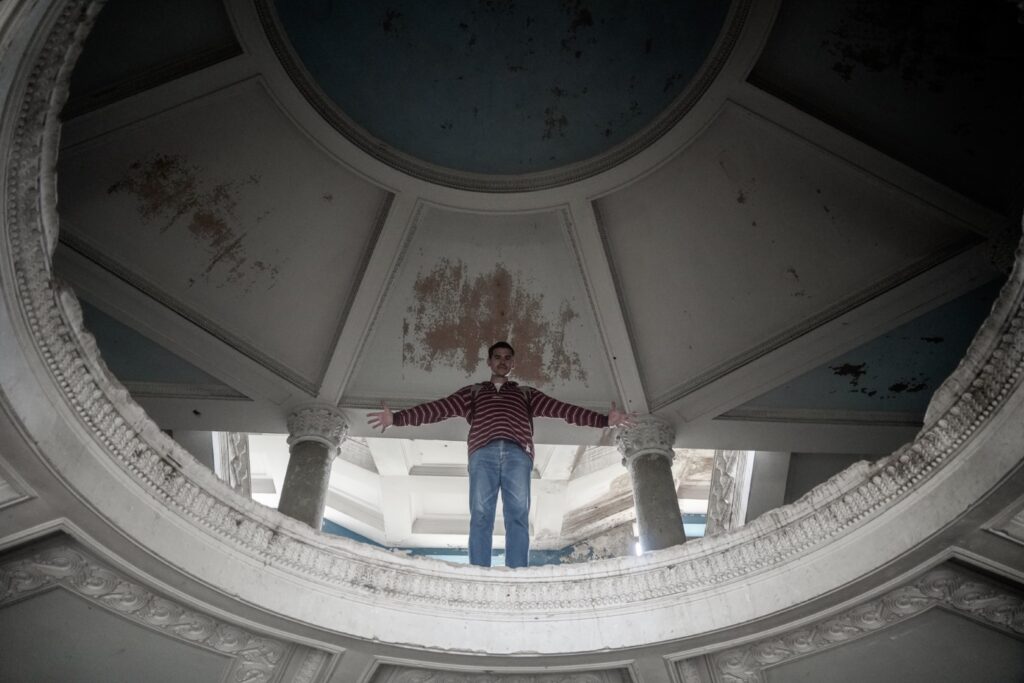
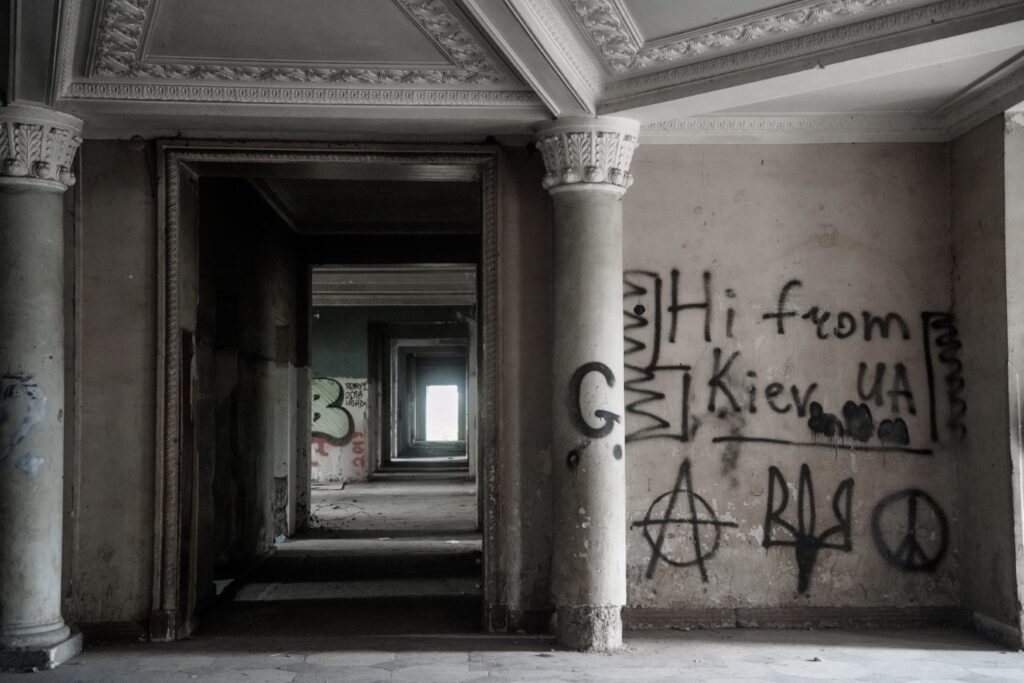



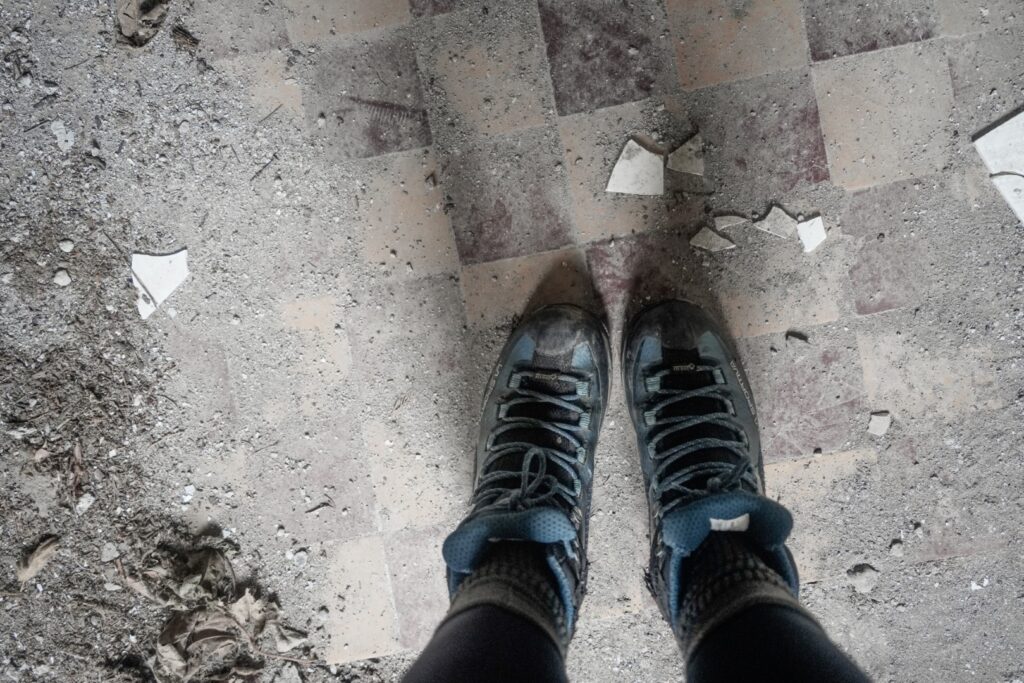
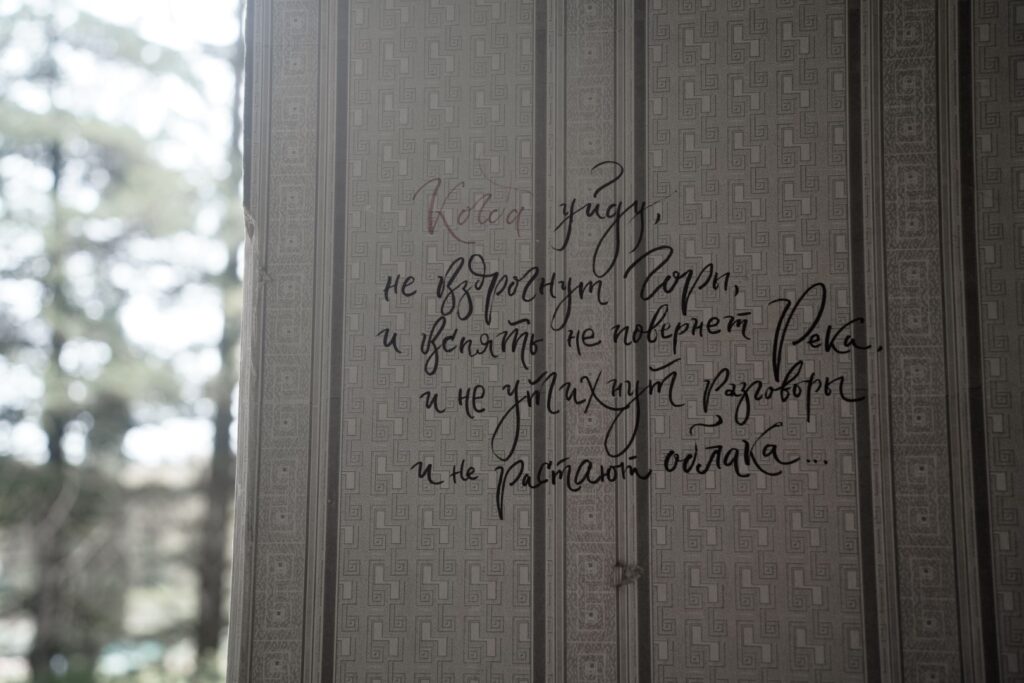
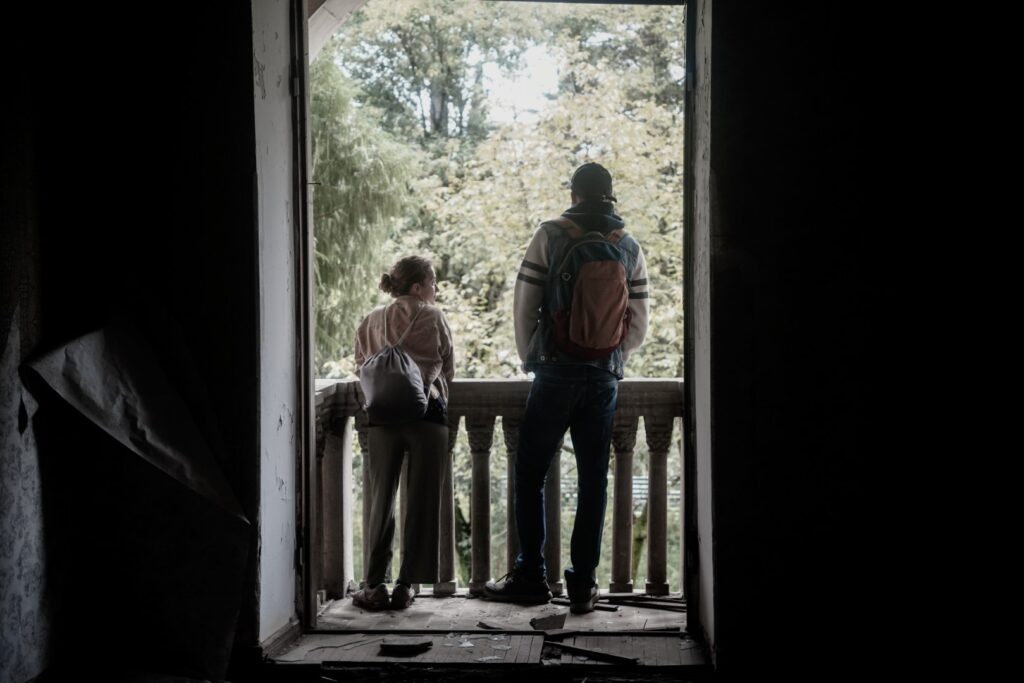
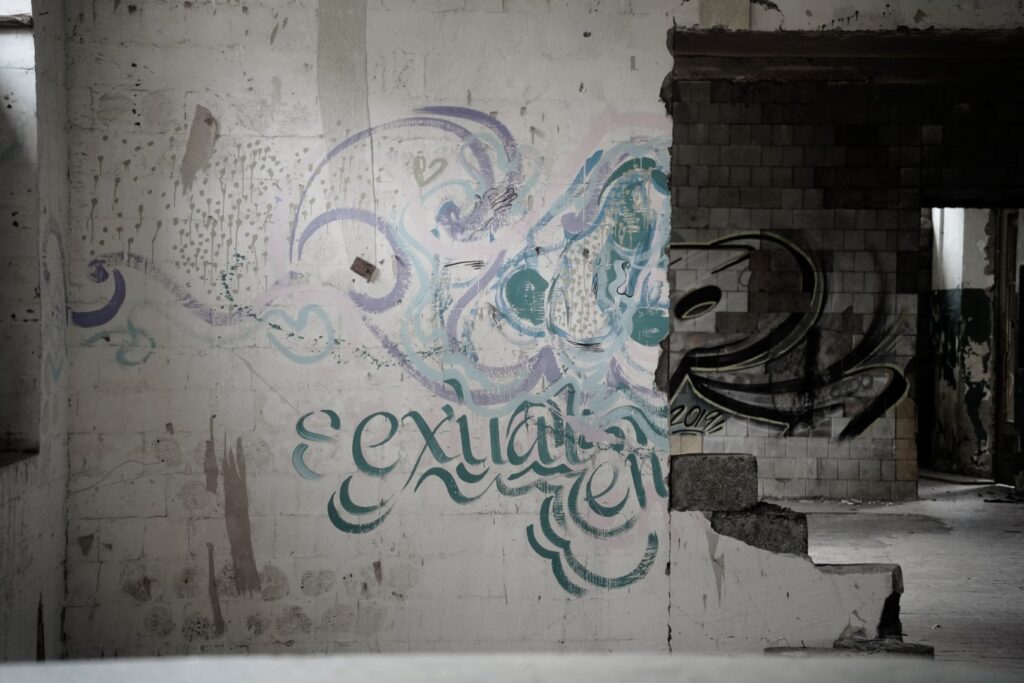
Finding myself spontaneously in Kutaisi during my journey through Georgia back in September 2021, I joined my travel buddies that I’d met in Tbilisi for a journey beyond Kutaisi. I knew nothing of the area as I hadn’t done any research whatsoever. So I was really excited when I learned that we were visiting Tskaltubo. I had to google what it was, and for someone who loves abandoned places, it couldn’t have been better.
Riccardo, the owner of Dingo Backpackers Hostel where we stayed in Kutaisi, offered to guide us for free the whole day, showing us some of his favourite places around Kutaisi, which included a morning visit to Tskaltubo. I’ve written about the rest of the day here, but I felt that Tskaltubo deserved its own post given how unique the place is.
As you might’ve guessed, there are plenty of abandoned sanatoriums and hotels to choose from in Tskaltubo, but Riccardo decided to show us his personal favourite, Sanatorium Iveria.
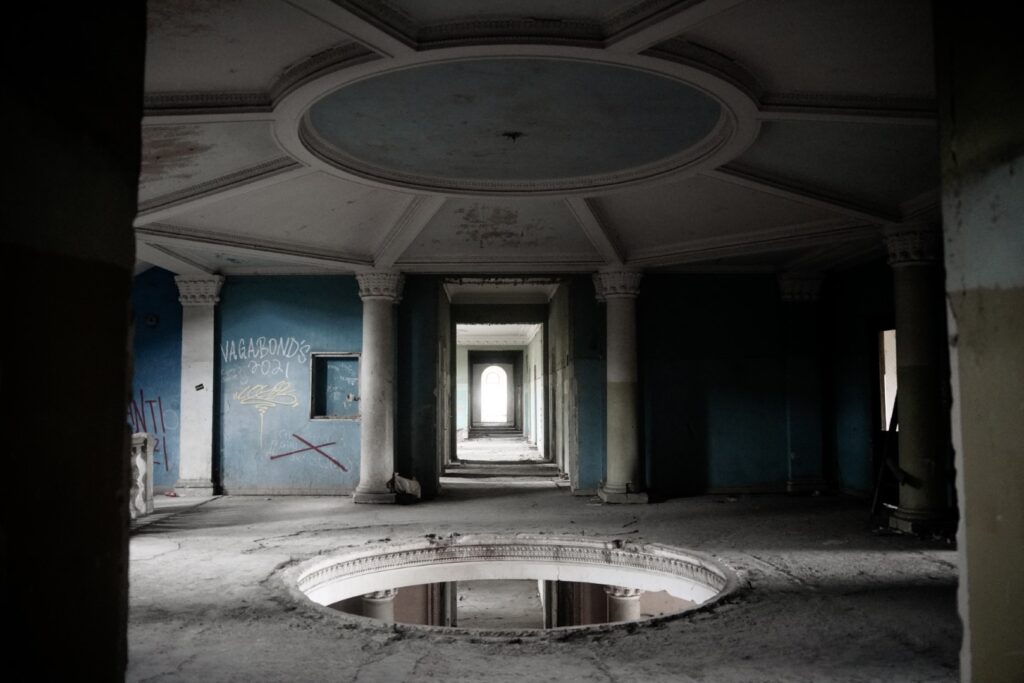


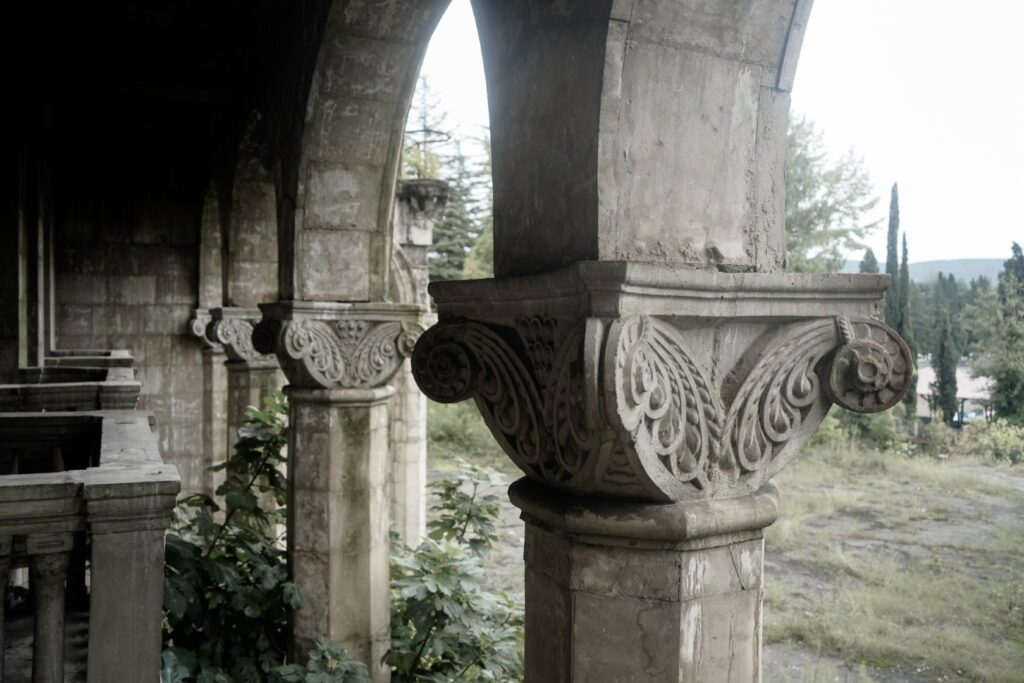
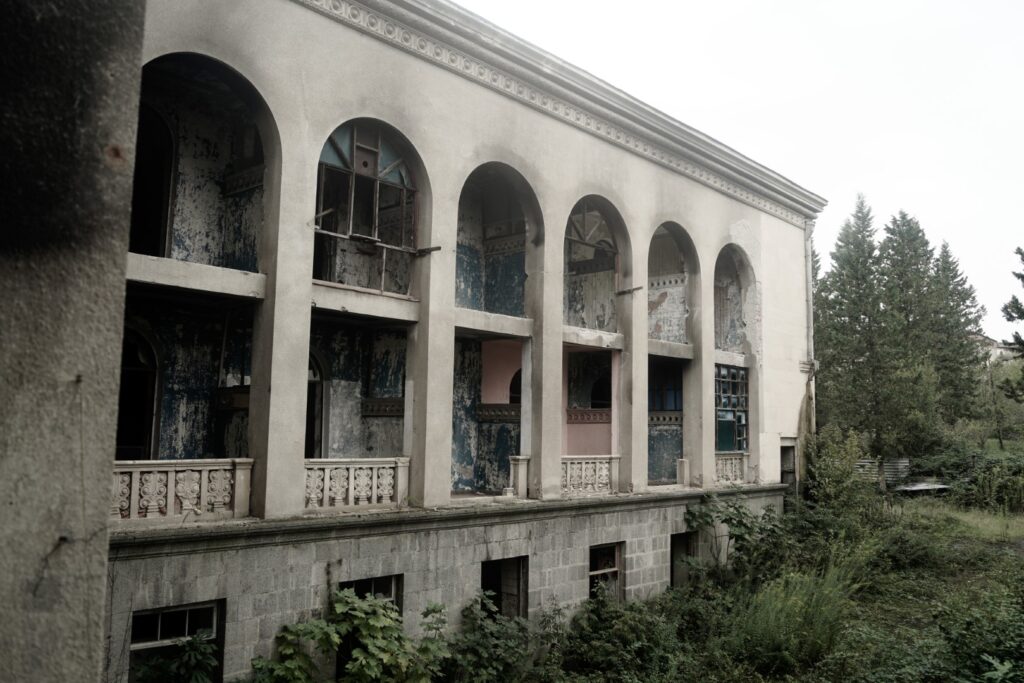
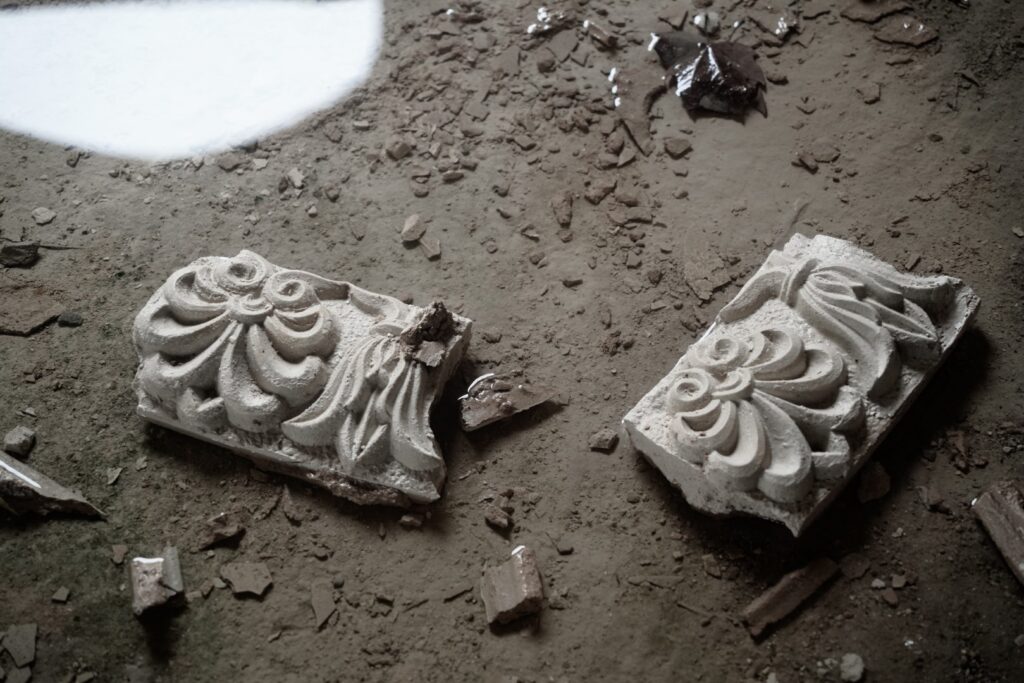
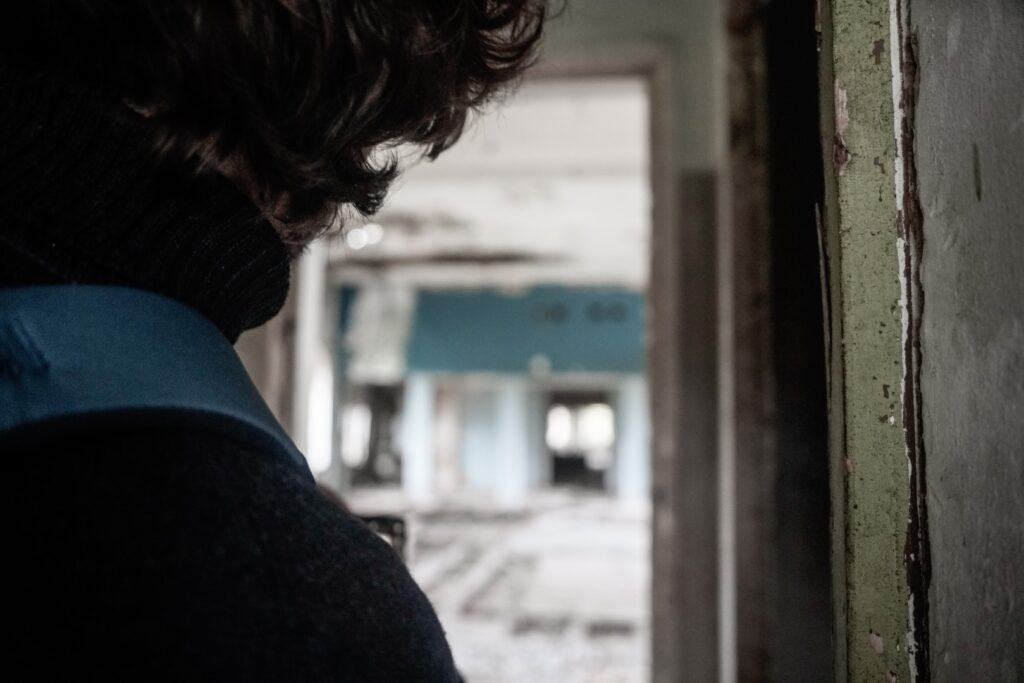
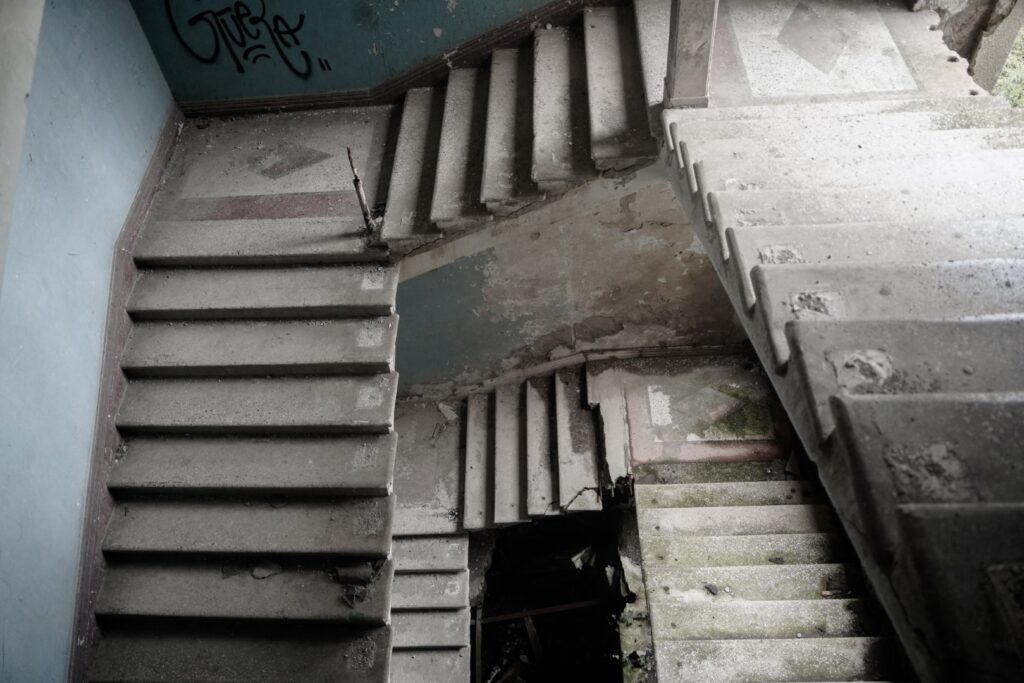
Sanatorium Iveria was built between 1952 and 1962 in the typical Stalinist architecture of the period. It is located in the centre of the town and had a capacity of 300 beds. However, like most other sanatoriums in Tskaltubo, it suffered following the collapse of the Soviet Union and by 1992, it was completely abandoned.
The monumental building features a circular internal balcony above the main entrance hall which has transformed into a massive hole in the ground after the railing was removed, presumably to be used for firewood. Furthermore, Iveria is full of grand staircases leading up to several upper floors with guest rooms and a large hall decorated with pillars, tall arched windows and an ornate ceiling. Riccardo took us to the roof of the building as he had previously found a hole in the roof that was big enough to climb through!
Iveria was sold to an investment group in 2017 for a mere US$100,000, with plans of reopening the sanatorium in the future, although it’s not clear whether or not the current building will be restored. However, given the fate of many of the other sanatoriums that were sold with great plans in mind but little outcome, I doubt that Iveria will ever return to its former glorious state. For us urban explorers, this is great news as Iveria is already as glorious as it gets – to us.
It’s unfortunate that we didn’t have time to visit any other abandoned sanatoriums in Tskaltubo, so I can’t tell you whether Iveria is the best one to visit although I do feel that it represents Tskaltubo well. The best part of Iveria is that the roof is accessible, so you can get a view of the entire eerie town with all its huge, deserted sanatoriums!
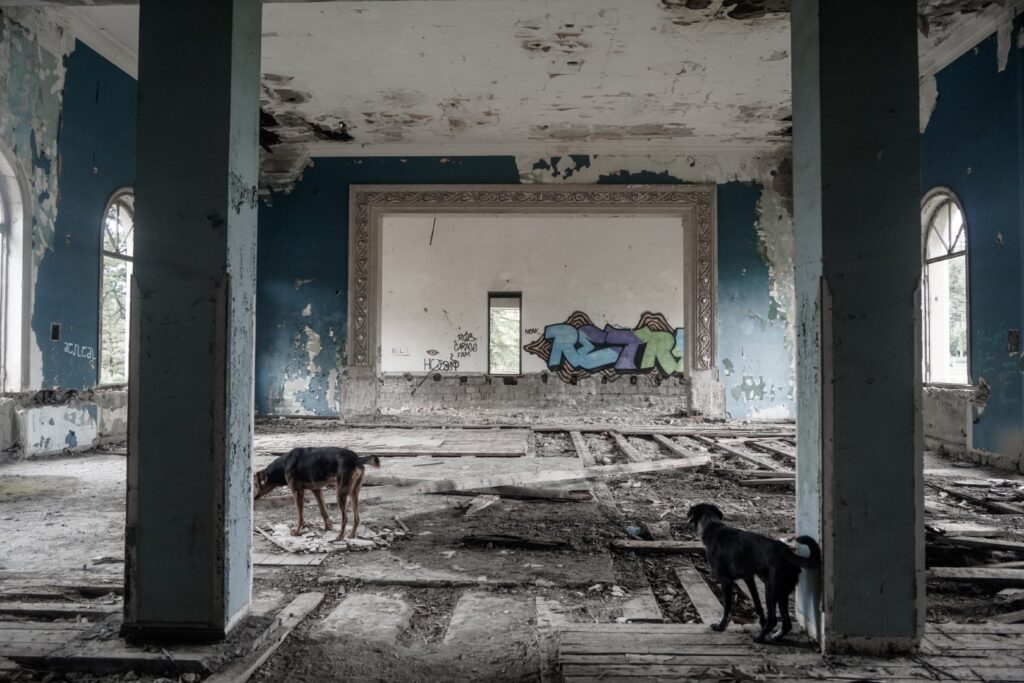
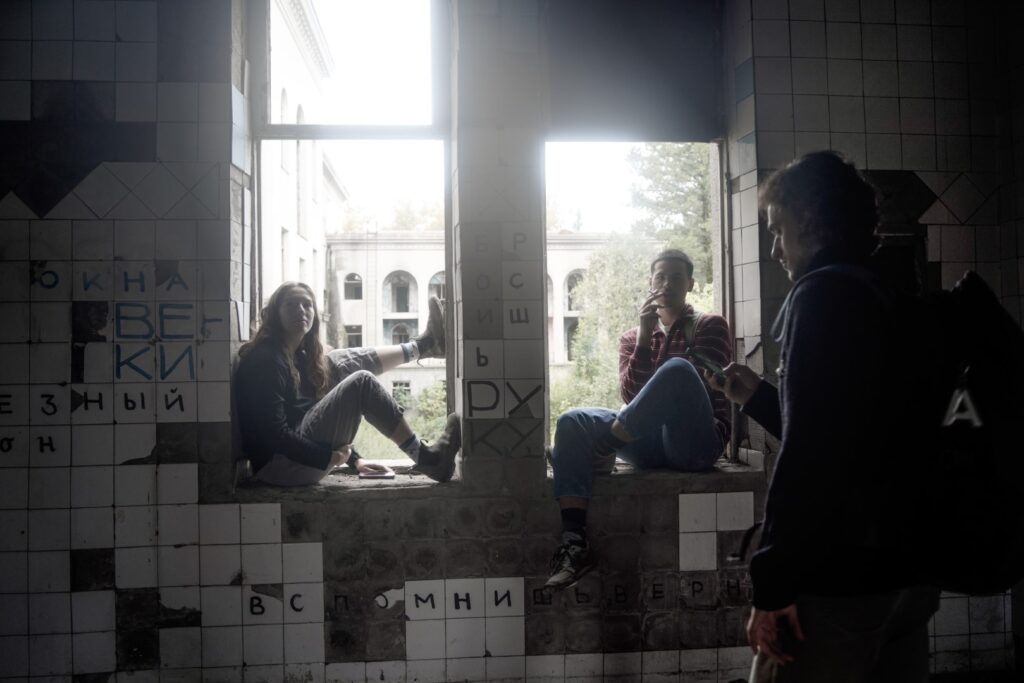

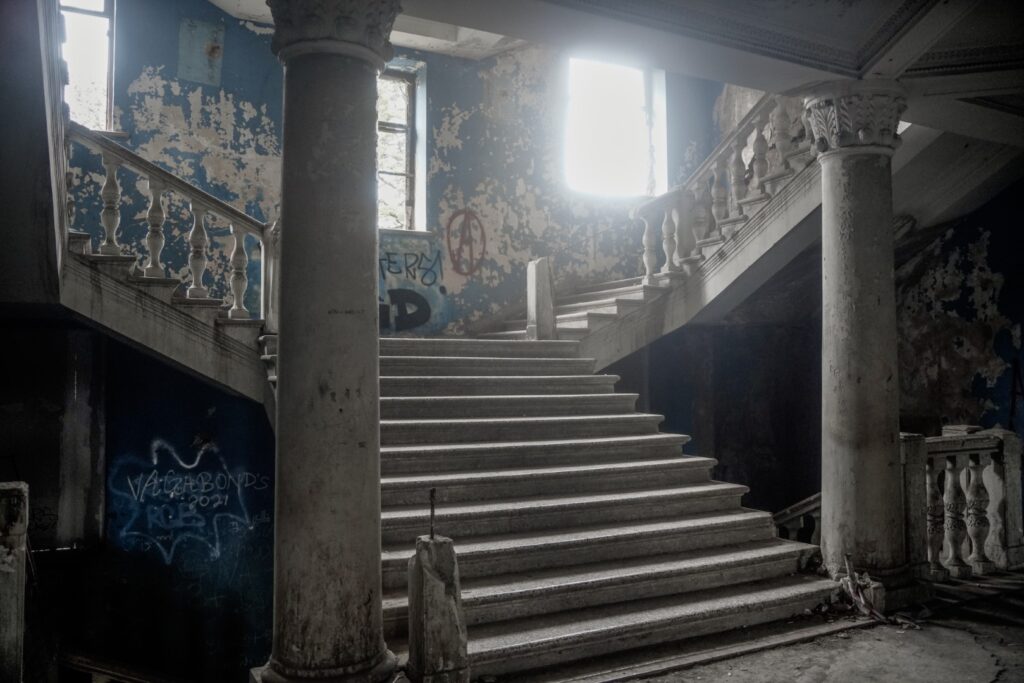

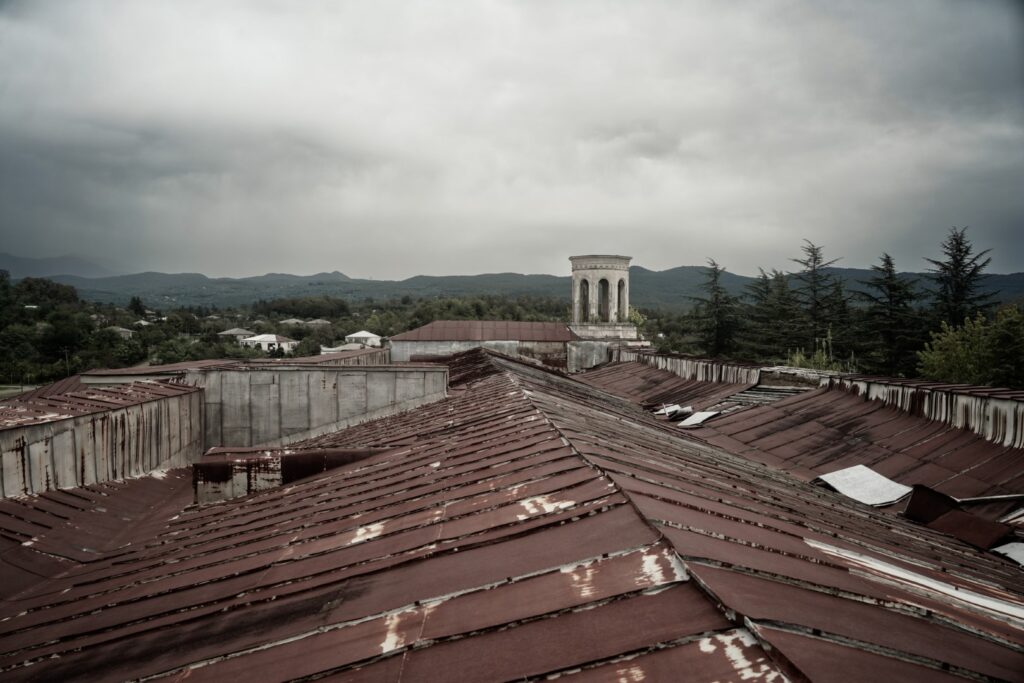

How to visit Tskaltubo and its abandoned sanatoriums
Getting to Tskaltubo is easiest from Kutaisi as it is just 15 kilometres away. Marshrutkas #30 and #34 both go to Tskaltubo and a ticket costs just 2 GEL. #30 leaves from the Red Bridge and departs every 20 minutes between 8 AM and 7 PM, and #34 leaves from the main bus station and departs every hour. Alternatively, you can catch a taxi which is very cheap in Georgia, especially if you split the price with other travellers. The price should be around 15-20 GEL one way.
Choosing which building(s) to explore in Tskaltubo is no easy task, but I would recommend teaming up with a local guide. They often have their favourite spots and are able to show you places you never would’ve found on your own (like Iveria’s roof!), and it’s also a great way to support local tourism. It’s very important to remember that many of these buildings are still lived in, and they are the only home some of these people have ever known, so do be respectful when exploring. If you encounter people living in a building you’re about to explore, ask for permission first!
Mark and Kirsty from Kathmandu & Beyond have written a very thorough guide to Tskaltubo’s many abandoned gems, so I recommend you check out their post before planning your visit!
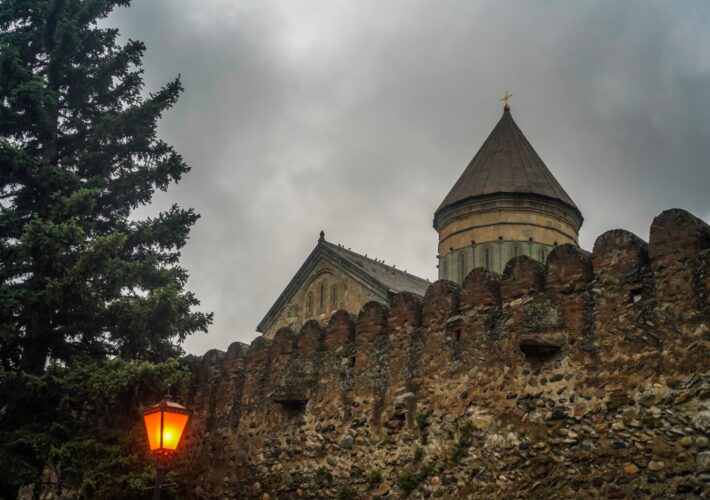

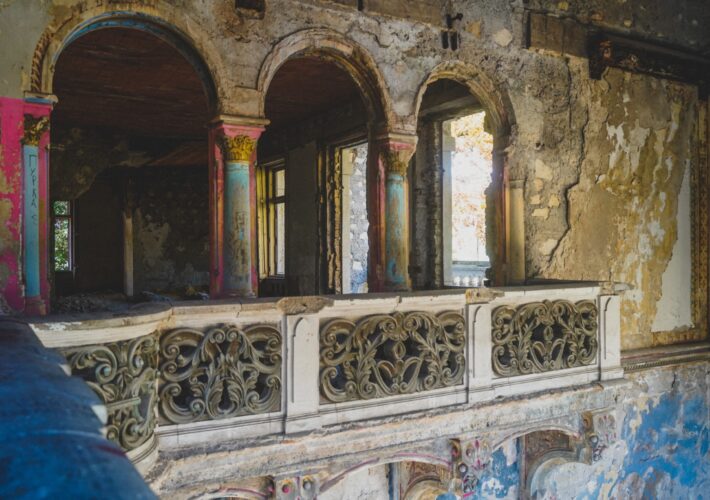
2 COMMENTS
Desirée travels
2 years agoThis is so cool, Melissa. Love your photos! I dunno why, but I’ve always had a thing for abandoned places. Now I really want to go to Tskaltubo!
Mel
2 years ago AUTHORThank you, Desirée!! Tskaltubo was incredible, but this urban exploration journey has actually made me realize how many incredible abandoned places there are in Denmark, too! I’m sure it’s the same in Norway 😀